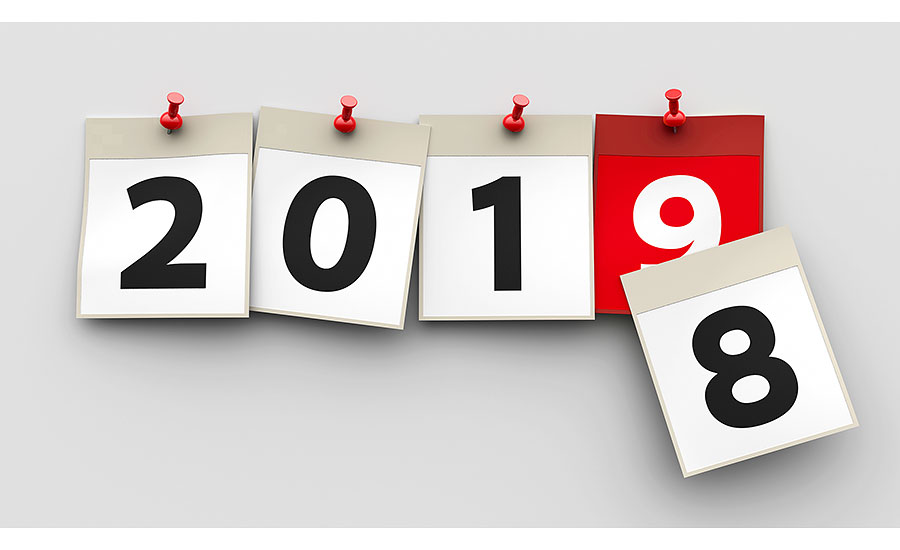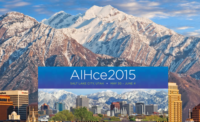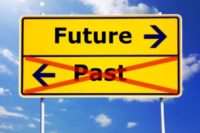OK, here we are, welcome to 2019.
What’s making news in workplace safety and health? The feds find Kentucky’s state OSHA plan fails to meet required standards. NASA is to launch safety reviews of SpaceX and Boeing, with a focus on company culture, supposedly sparked by SpaceX CEO Elon Musk taking a hit of marijuana and sipping whiskey on a podcast streamed on the Internet. Amazon is accused of treating fulfillment center associates as disposable. The voluntary ISO 45001 occupational safety and health management system standard bandwagon and associated money-making machinations gets up steam after being finalized last year. As we go to press, OSHA still lacks a permanent political appointee to head the agency.
Interesting, perhaps eye-catching stories, but not particularly relevant to the day-to-day work of ISHN readers. With the exception of ISO 45001, which will become the responsibility of a select few multinational safety and health pros. So let’s dig a little deeper, shall we?
Continuing sagas
What’s relevant in 2019 cannot be neatly captured in a news story. We’re talking about issues with origins that stretch back years if not decades, and will have no ending this year. Some examples:
- Safety and health professionals still work on getting credibility. In a “Look forward to 2019” forecast prepared by Intelex, one pro half-jokes, “We’re still the Rodney Dangerfields of the business sector. We get no respect.”
- That’s because many pros are still trying to fight their way out of organizational silos. Combat the image of being compliance cops. Erase the stigma of being seen as a cost center. Make a successful business case for safety and health resources.
- That’s because many senior managers in organizations perceive occupational safety and health no differently than they did in the 1970s or ‘80s. For many, they want but one answer from pros: What’s our OSHA recordable rate?
- Sustainability reporting, with upwards of 60 to 70 key performance indicators (KPIs) to choose from, will continue to fall into the lap of more safety and health pros. Sure, many multinationals have full-time sustainability officers and departments. But not everyone wants to add to headcount while burnishing their corporate responsibility/good citizen image – especially as you trickle-down global supply chains to small and medium size enterprises.
- Largely under-the-radar work will continue on adding occupational safety and health KPIs to sustainability metrics, which are most environmentally-oriented. This work involves largely unknown (to most safety and health pros) entities such as the Global Reporting Initiative (GRI), an independent international organization based in Amsterdam, the Netherlands, that has been at the forefront of sustainability reporting since 1997.
Making the business case
Another player is the Sustainability Accounting Standards Board (SASB), based in San Francisco and founded in 2011. The SASB has compiled an SASB Materiality Map® that lists issues likely to affect the financial condition of companies within numerous industries, such as consumer goods and energy extraction. Top issues all relate to the environment – greenhouse gas emissions, air quality, water and wastewater management, and so forth. There is a dimension to the map titled, “Human Capital” that includes labor practices; employee engagement, diversity & inclusion; and yes, employee safety and health. Not that many pros will want their titles changed to “Human Capital Preservation Managers.”
CDP, formerly the Carbon Disclosure Project, based in the United Kingdom, is another non-governmental organization (NGO) in the sustainability game. It supplies corporate sustainability data to more than 650 investors with $87 trillion in assets. You also probably have not heard of the Financial Accounting Standards Board (FASB), based in Norwalk, CT, established in 1973, which among many projects attempts to define accounting methods for “goodwill and other intangible assets.” Occupational safety and health can be interpreted as a goodwill and intangible asset.
Making the intangible into something quantifiable is the objective of the Center for Safety and Health Sustainability, which was partly founded by the American Society of Safety Professionals in 2011. It provides more than 100,000 safety and health pros in more than 70 countries with ammunition to make the business case that a sustainable organization must ensure safe and healthy workplaces for its employees and contractors.
Long-term, the work of these NGOs should help make the business case for safety and health departments.
Talk of technologies
Walk the floor of an occupational safety and health expo and you find an ever-growing array of technology vendors. Products and services range far and wide: crunching big data, predictive analytics, software of all stripes and varieties, personal protective equipment (PPE) wearables, mobile apps for auditing and reporting, drones, autonomous vehicles, satellites, sensor-embedded smart gas detection, smart lockout-tagout, smart confined space entry, virtual reality training simulations and artificial intelligence.
It is part of the Internet of Things (IoT) or Industry 4.0, a name for the explosion of automation and data platforms – the fourth industrial revolution.
Technology uptake in the safety and health world follows a common narrative: early trials by the largest multinationals; when these technologies deliver a return on investment acceptance and use will tickle down. The potential for changing the roles of safety and health pros is great, but far beyond the confines of 2019.
Putting “health” back into “safety and health”
Let’s look at one final storyline for 2019 – an inevitable growing emphasis on employee health, physical and psychological wellness, personal resilience, lifestyle choices and fitness for duty. Employee and organizational safety has been the prime focus of regulations and business practices for the past century. The paradigm shift toward health began in Europe and is taking hold in the U.S.
Why is this shift inevitable? Work continues to be more mental, less hard labor. Let the robots do it. Mental health disorders are slowly shedding their stigmas. Healthcare costs must be contained. “Talent,” “assets,” “human capital,” people if you will, are becoming less concerned about getting clunked on the head by heavy equipment and more concerned about jobs making them fatigued, mentally exhausted, sick, distressed and overloaded. Especially among the younger generations, and in this era of work without boundaries – working on vacations, at night, on weekends, while home sick, etc.
Businesses, meanwhile, are becoming more interested in the weight of their employees, blood pressure and cholesterol levels, exercise habits, diets, sleep patterns, substance abuse, stretching and flexibility, yoga and mindfulness, anxiety and depression. It’s about corporate values, cultures and of course money – healthcare dollars. “Mandatory wellness” is entering the lexicon.
Bottom line
Some issues never change in the safety and health world — fighting for credibility, resources and more empowering and engaging responsibilities. Then again, look at the language we’re using to describe issues in 2019 — materiality, human capital, cloud computing NGOs, KPIs, fatigue, mindfulness, transparency, resilience. That’s not the vocabulary of a decade ago. Time marches on.
— Dave Johnson, ISHN Editor,




